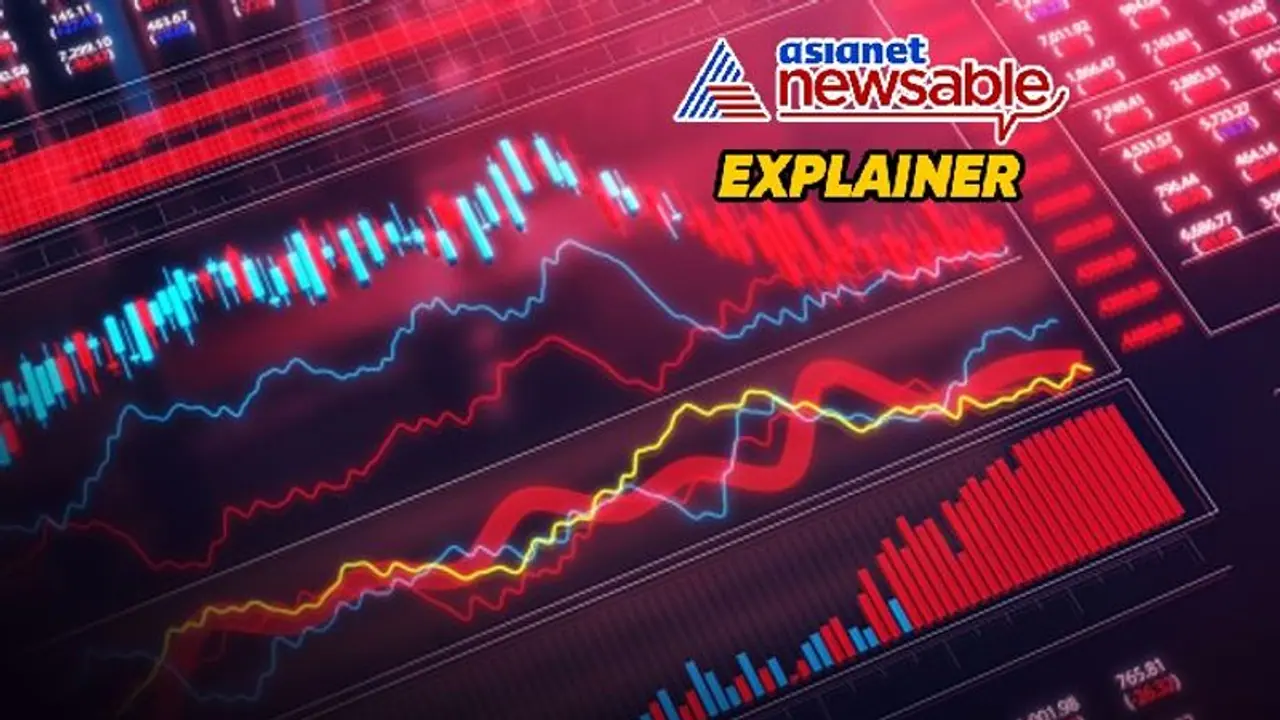BSE Sensex experienced a significant drop of more than 1,600 points in Wednesday's trading session, marking its worst performance in the last 16 months. Simultaneously, the broader Nifty50 index also witnessed a substantial decline, plunging by over 450 points.
The BSE Sensex witnessed a significant decline of over 1,600 points on Wednesday, marking its worst performance in the last 16 months. The Nifty50, a broader 50-share index, also experienced a substantial drop of over 450 points. The primary cause of this market downturn was attributed to the banking sector, notably with HDFC Bank leading the decline with a plummet of over 8% following the announcement of its Q3 results.

Global market negativity further fueled the downward trend in Indian benchmark equity indices for the second consecutive day. The BSE Sensex concluded the day at 71,500.76, recording a decrease of 2.23%, while the Nifty50 closed down 2.09% at 21,571.95.
HDFC Bank reported a 8.10% decline in trade after unveiling its Q3 FY24 results, despite a 34% year-on-year rise in net profit at Rs 16,372.54 crore and a 24% increase in net interest income. The bank's shares closed at Rs 1,542.95, down 8.10% or Rs 136 on the Bombay Stock Exchange.
Also read: World Economic Forum 2024: Adani Group to invest over Rs 12400 crore in Telangana
Other banking stocks within the Sensex, including Axis Bank, ICICI Bank, Kotak Bank, SBI, and IndusInd Bank, also saw declines ranging up to 2%. Across sectors, Nifty Bank and Nifty Financial experienced declines of over 2%, while Nifty Metal, Realty, Auto, Media, and Healthcare saw declines ranging from 0.3% to 1.8%.
Various factors played a role in the decline of BSE Sensex and Nifty50 today:
1. HDFC Bank Drives Sharp Decline in Indian Markets
HDFC Bank played a pivotal role in influencing Indian shares, emerging as the primary catalyst for the market decline, as outlined in an ET report. The solitary impact of HDFC Bank contributed to a 167-point decrease in the Nifty index. Following the disclosure of its December quarter results, HDFC Bank experienced a notable plunge of over 8%, reaching a low of Rs 1,527.25 on Wednesday. Investor apprehensions were primarily fueled by the bank's higher provisions compared to the previous year. Despite achieving a commendable 34% increase in net profit, major brokerages expressed reservations regarding the bank's loan growth and margins. This cautionary stance significantly influenced market sentiment, serving as a key driver for the overall downturn in Indian shares.
2. US Dollar Surge Impacts Commodities
The dollar index, gauging the US dollar's strength against a basket of currencies, attained a one-month peak. The heightened value of the dollar escalates the cost of commodities, such as crude oil. Consequently, this surge in import costs contributes to an expanded current account deficit for India.
3. Chinese Equities Lead the Decline
On Wednesday, Asian stocks experienced a downturn, with Chinese equities taking the lead. Various data points highlighted an uneven recovery in the world's second-largest economy. Chinese stocks saw a significant decline following the announcement that the country's economy expanded by 5.2% in the fourth quarter of the preceding year, falling short of analysts' projections. The blue-chip stock index in China plunged by over 1% in early morning trade, reaching its lowest point since early 2019. Additionally, Hong Kong's Hang Seng index registered a notable decline of 2.5%.
Also read: Petrol, diesel prices may be slashed by Rs 5-10 next month: Report
4. 10-Year Treasury Yield Surges
The 10-year Treasury yield, reflecting long-term borrowing costs, climbed to 4.052%. This upswing in yield is a reaction to apprehensions that the anticipated rate cuts by the US Federal Reserve may not materialize. While the market had foreseen five or six rate cuts in 2024, indications now suggest that the Fed is unlikely to implement rate cuts in March. V K Vijayakumar, Chief Investment Strategist at Geojit Financial Services, remarked on the global pessimism triggered by the increasing bond yields in the US. Initially, the market had anticipated substantial rate cuts from the Federal Reserve, but current indications suggest that a cut in March or as many cuts in 2024 as previously expected is now less likely.
5. Overvaluation of mid and small-cap segment
According to V K Vijayakumar of Geojit Financial Services, the mid and small-cap segment is currently experiencing significant overvaluation, sustained by ample liquidity in the system. Over the past year, the Nifty Smallcap100 index witnessed a remarkable surge of nearly 60%, and the Nifty Midcap100 index recorded a gain of over 40%. In contrast, the Nifty itself saw a comparatively modest increase of 21% during the same period.
